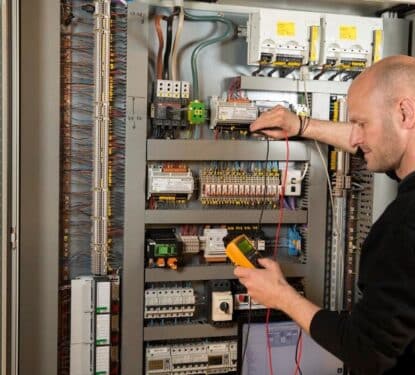Buildings consume 70% of total electricity production in the US and account for 39% of CO2 emissions, according to the US Green Building Council, the figures are similar in other developed nations. While the most recent Commercial Buildings Energy Consumption Survey (CBECS), highlights that 17% of all electricity consumed in US commercial buildings is for lighting, making it the largest single end use of electricity. This makes lighting a key target for reducing electricity consumption through energy efficiency.
The first step in reducing the energy consumption lighting represents in buildings is the switch from conventional bulbs to low power Light Emitting Diodes (LED), a transition well underway in many parts of the world. In fact, overall electricity consumption for lighting in offices dropped from 38% to 17% of total usage between 2003 and 2012 largely thanks to LED retrofits. The next step is developing lighting controls, which research firm Gartner predict could ultimately result in savings as high as 90%. Lighting controls also open up the potential for smart lighting to drive new Internet of Things (IoT) applications.
“Lighting is undergoing a rapid transformation as LEDs become the number one source of light in buildings,” states our report Smart Buildings: The Lighting Controls Business. “The transition to LEDs for lighting has come at the same time as the development of the IoT, which is about to disrupt the building automation systems (BAS) industry and opens up the possibility for lighting control to play a much more important role,” it continues.
Follow to get the Latest News & Analysis about Smart Buildings in your Inbox!
Lighting is one of the few technologies that are essentially ubiquitous in all human environments. This simple fact means that intelligent lighting systems can provide the platform for a host of IoT applications that can bring about better safety, security, productivity and wellbeing for occupants in those environments. The matter of lighting controls is not a simple one, however, issues of physical integration as well as standards still stand in the way of widespread adoption of lighting controls.
“The promise of smart LED lighting controls has been with us for some time but until now, implementing a building-wide control system for lighting has remained a challenge,” says Russ Sharer, vice president of global marketing and business development for Fulham Co., Inc. “There have been multiple potential integration strategies, not to mention different requirements and products for retrofits versus new construction. Without a single dominant control technology, lighting control adoption has been slow since no one wants to back the wrong technology.”
In new buildings, ethernet cabling infrastructure can easily be applied to offer Power over Ethernet (PoE) using the IEEE 802.3 standard, to power LEDs and provide high rates of data transfer. In the vast majority of building stock, existing buildings, the cost of retrofitting ethernet cabling infrastructure is prohibitive. Wireless control standards, like Zigbee and Zwave, are available but only offer proprietary, single-vendor solutions. The lighting sector needs an answer to wireless lighting control that is available to everyone, for many experts in the sector that answer will come from Bluetooth Mesh.
"For us, Bluetooth mesh is the future," said Dr. Juergen Kienhoefer, CEO, Wireless Cables Inc. "Our customers are mostly industrial customers that work with sensors and controls, meaning they need long range, tight security, and reliable communication with a large number of devices, as well as more and more integrated web capabilities each year. While our current solutions can extend Bluetooth range up to 200 meters, Bluetooth mesh allows us to solve even more complex range and limit problems."

An evolution of the point-to-point Bluetooth device connection standard created by Ericsson in 1998, Bluetooth Mesh is a wireless radio networking schema created to scale to connect thousands of devices using a “flood network”. This means that every incoming data packet across every outgoing connection to share the data across a lattice of Bluetooth devices. Scalable and fast, Bluetooth Mesh has no single point of failure making it robust and reliable. This open standard not only brings about energy efficiency but also opens the door to the IoT in all kinds of buildings.
“The addition of mesh to the Bluetooth standard will open up significant opportunities for richer experiences in smart homes and building automation, enabling fresh waves of innovation across a range of IoT applications,” says Bob Morris, vice president of marketing, Wireless Business Unit, ARM. “Low-power connectivity is essential to bringing the next generation of secure IoT devices to life.”
Together, the clear energy efficiency benefits and the promise of IoT are expected to drive demand for wireless lighting controls in the coming years. The next step in the evolution of lighting controls will be for manufacturers delivering SIG qualified Bluetooth Mesh-ready luminaires with sensors installed. These out-of-the-box solutions will be easy to install and offer a quick return on investment. “Once this Bluetooth Mesh framework is in place delivering two-way, machine-to-machine communications, the possibilities offered by smart building controls are endless,” says Sharer.



